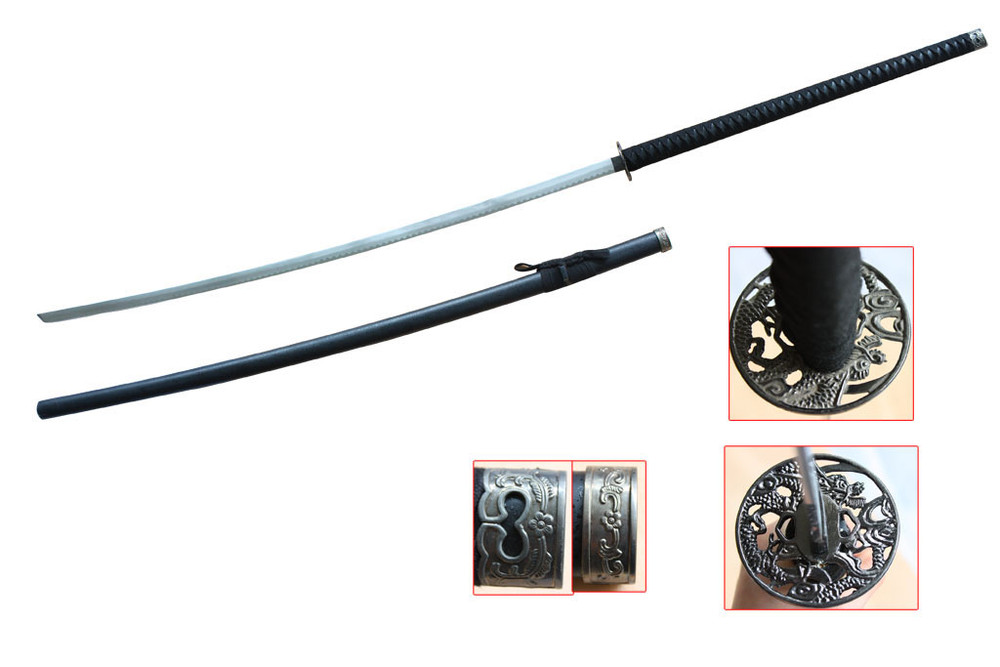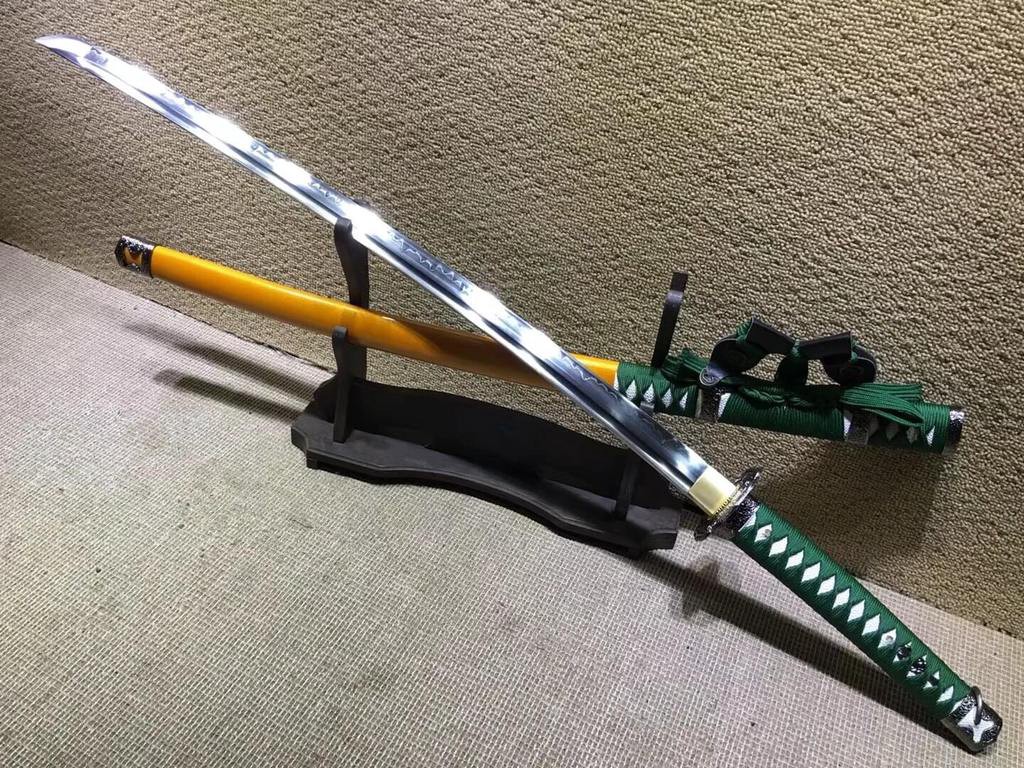

This tempering process keeps the strong and sharp edge of the blade while allowing the rest of the blade to be more flexible. In this case, the clay is painted everywhere except the edge. The clay is thickly painted on the blade to insulates the parts of the blade that we want softened so they cool more slowly during the quenching process. To increase the flexibility of this steel, tempering is used to soften the steel. There has been an attempt to say that nodachi are 'battle ready' swords of greater length than the standard katana, while odachi are 'ceremonial' swords that are likewise of greater length than the average katana, but there's absolutely no consensus and those tend to use a Western viewpoint (also using terms like 'dai-katana' or 'O-katana. Flexibility is critical to sword making so the sword doesn't break on high impact collisions. The problem with 1095 steel is that it is lacks flexibility. 1095 steel typically has a hardness of 56-58 HRC. Nodachi sword, or dachi, was a type of traditional Japanese sword used by the samurai warriors of feudal Japan. 1095 steel is known for its ability to maintain an edge and is an incredibly hard steel. The most common high carbon swords are 1045 steel which only have.

95% which is one of the highest carbon levels for any type of steel. 1095 steel is the highest carbon steel commonly used in swords. As guns became widely used, the nodachi was replaced with the shorter katana. The nodachi was so large that it was difficult to draw a sword from the scabbard on the waist, so users carried it on their back or had their servants to carry it. It is believed this occurred due to new technological advancement that allowed for the creation of longer, durable, sharp blades. In the Nanboku-chō period, during the 14 th century, huge Japanese swords became popular. A symbol of power, prestige, and honor, this. To qualify as a nodachi, the sword in question would have a blade length of at least 35.8 inches, or 90.9 centimeters, however exact definition of the size of the sword. Embrace the legacy of the samurai as you lay eyes upon a masterpiece of Japanese craftsmanship: the Odachi sword. Gift: For lovers of history, Japanese culture, or martial arts, a Nodachi could be a thoughtful, meaningful gift, symbolizing courage, strength, and elite status.Nodachi sword, or ōdachi, was a type of traditional Japanese sword used by the samurai warriors of feudal Japan. Ceremonial Use: The Nodachi can be used in ceremonies or festivals, symbolizing power, bravery, and martial skill.ĥ. Both these swords had a large blade of up to 3 shaku (Japanese. It was said that the sword was inspired by legendary mythology. Nodachi and Odachi both belong to Nihonto (Japanese swords), carried by Samurai of feudal Japan. In terms of size, it’s the Japanese equivalent of the Chinese Miao Dao and the Western longsword or claymore. Display: Given its impressive size and historical significance, a Nodachi makes an eye-catching centerpiece in a weapon collection or as a standalone display in homes or offices.Ĥ. The Nodachi is a type of Nihonto wielded by the Samurai warriors of feudal Japan. Martial Arts Training: Traditional martial arts like Kendo, Kenjutsu, and Iaido could incorporate the Nodachi in advanced training, challenging practitioners to adapt to its size and weight.ģ. Historical Reenactments: The Nodachi Sword is perfect for historical reenactments, as its unique size and shape lend authenticity to the portrayal of samurai-era events.Ģ.

The result is an impressively crafted Nodachi Sword, uniting the artistry of ancient techniques with the precision of modern craftsmanship, creating a masterpiece that commands respect and admiration.ġ. Our craftsmen also create a custom scabbard, matching the unique curvature and length of the Nodachi to protect the blade and add to its aesthetic appeal. The tsuka, or handle, is traditionally wrapped for a secure grip, complementing the sword's balance and allowing for fluid movements. However, they have larger blades than Samurai Katana swords. The result is an exceptionally long, razor-sharp blade that mirrors the Nodachi's historical reputation for power. Nodachi and Odachi are considered long Japanese weapons similar to Katana. This process involves careful folding and tempering to create a blade that's both flexible and capable of maintaining a sharp edge. The sword begins its life in the hands of our master smiths, who painstakingly forge the blade from high-quality steel. The Katana and Nodachi are two distinct types of swords that originated from Japan, both designed with specific uses in mind. Our Nodachi Sword stands as a testament to skilled craftsmanship, harking back to the time-honored techniques used by ancient Japanese blacksmiths.


 0 kommentar(er)
0 kommentar(er)
